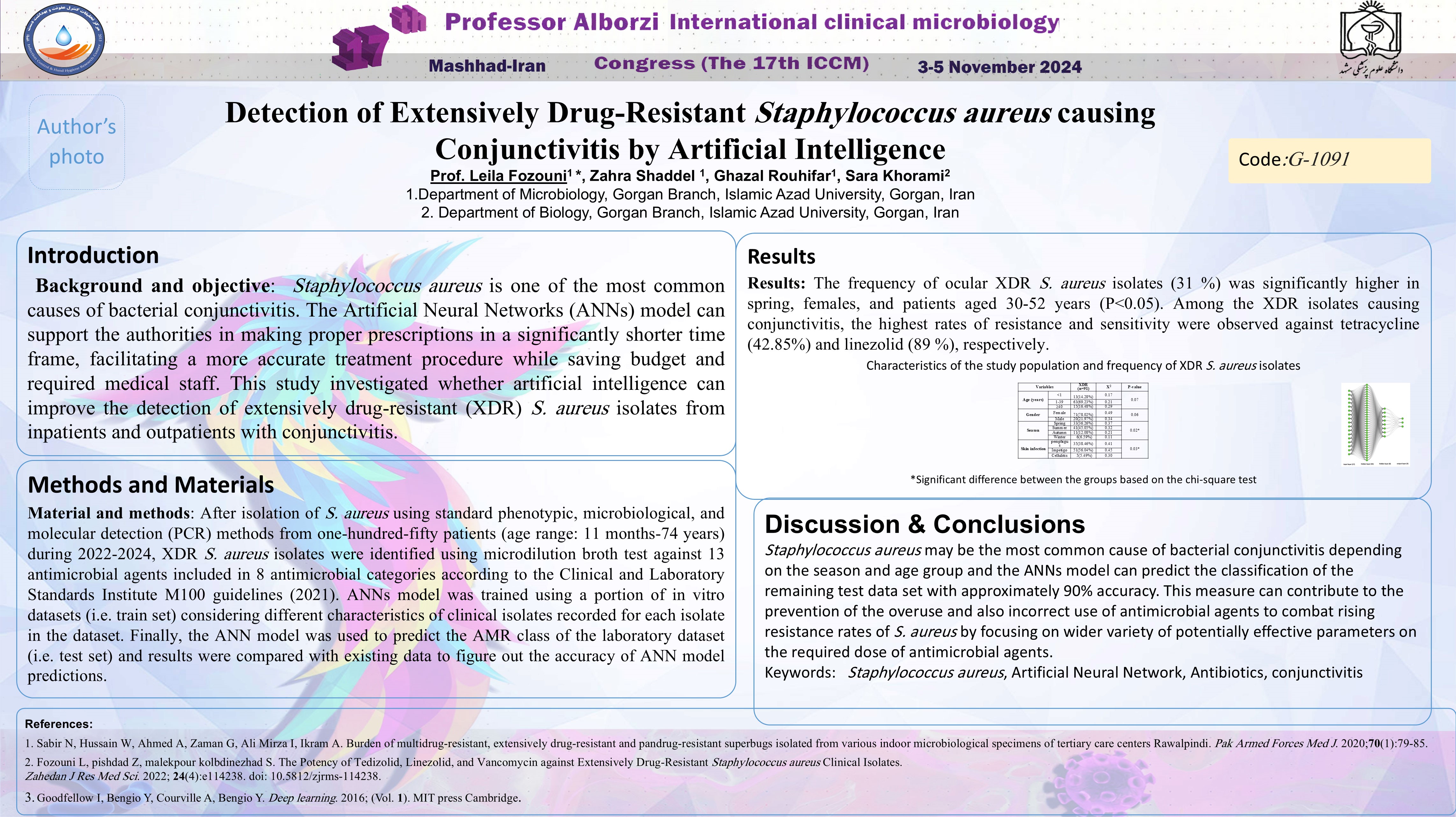شناسایی استافیلوکوکوس اورئوس عامل ورم ملتحمه با مقاومت گسترده دارویی با استفاده ازهوش مصنوعی
کد: G-1091
نویسندگان: Leila Fozouni © ℗, Zahra Shaddel, Ghazal Rouhifar, Sara Khorami
زمان بندی: زمان بندی نشده!
دانلود: دانلود پوستر
خلاصه مقاله:
خلاصه مقاله
Background and objective: Staphylococcus aureus is one of the most common causes of bacterial conjunctivitis. The Artificial Neural Networks (ANNs) model can support the authorities in making proper prescriptions in a significantly shorter time frame, facilitating a more accurate treatment procedure while saving budget and required medical staff. This study investigated whether artificial intelligence can improve the detection of extensively drug-resistant (XDR) S. aureus isolates from inpatients and outpatients with conjunctivitis. Material and methods: After isolation of S. aureus using standard phenotypic, microbiological, and molecular detection (PCR) methods from one-hundred-fifty patients (age range: 11 months-74 years) during 2022-2024, XDR S. aureus isolates were identified using microdilution broth test against 13 antimicrobial agents included in 8 antimicrobial categories according to the Clinical and Laboratory Standards Institute M100 guidelines (2021). ANNs model was trained using a portion of in vitro datasets (i.e. train set) considering different characteristics of clinical isolates recorded for each isolate in the dataset. Finally, the ANN model was used to predict the AMR class of the laboratory dataset (i.e. test set) and results were compared with existing data to figure out the accuracy of ANN model predictions. Results and Conclusion: The frequency of ocular XDR S. aureus isolates (31 %) was significantly higher in spring, females, and patients aged 30-52 years (P0.05). Among the XDR isolates causing conjunctivitis, the highest rates of resistance and sensitivity were observed against tetracycline (42.85%) and linezolid (89 %), respectively. Staphylococcus aureus may be the most common cause of bacterial conjunctivitis depending on the season and age group and the ANNs model can predict the classification of the remaining test data set with approximately 90% accuracy. This measure can contribute to the prevention of the overuse and also incorrect use of antimicrobial agents to combat rising resistance rates of S. aureus by focusing on wider variety of potentially effective parameters on the required dose of antimicrobial agents.
کلمات کلیدی
Staphylococcus aureus, Artificial Neural Network, Antibiotics, conjunctivitis
